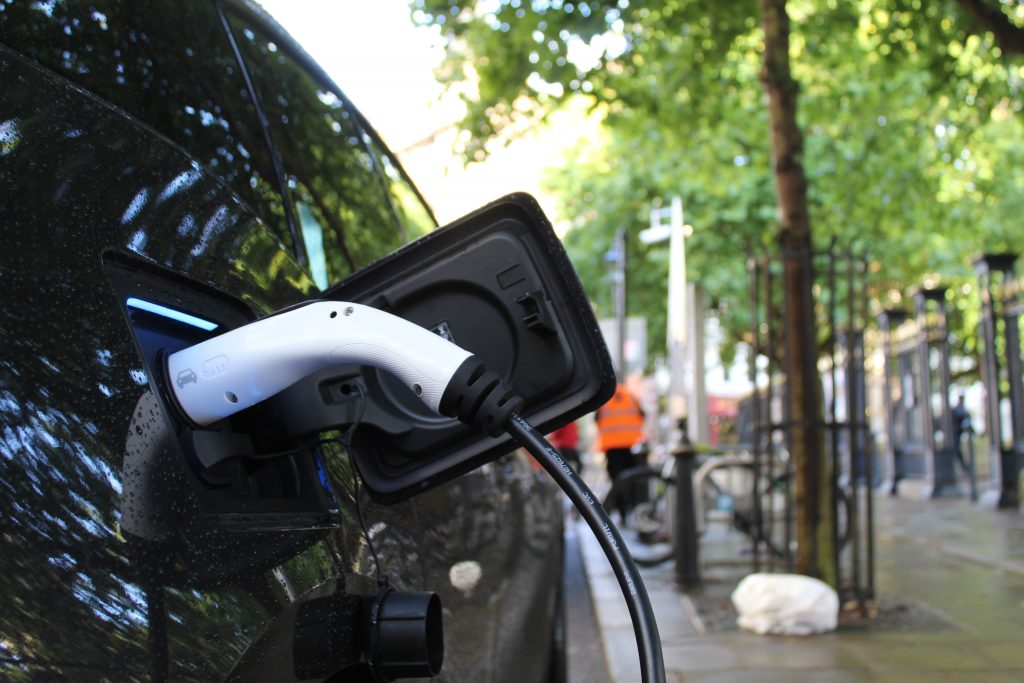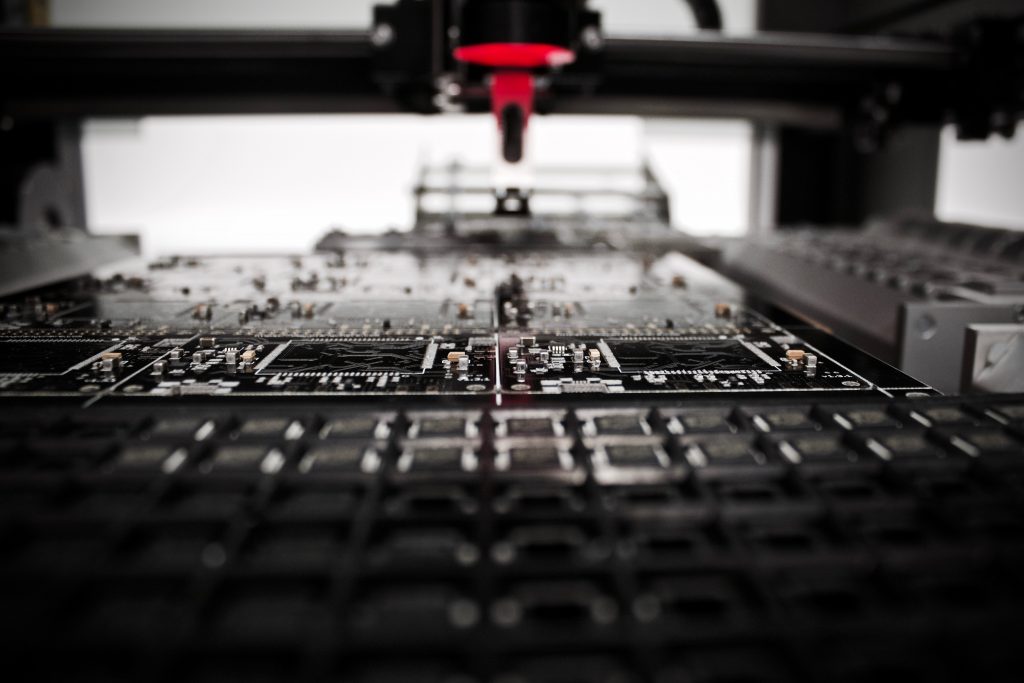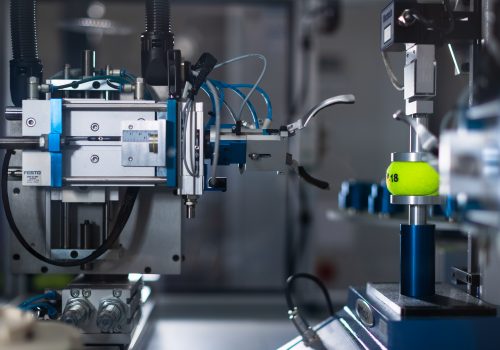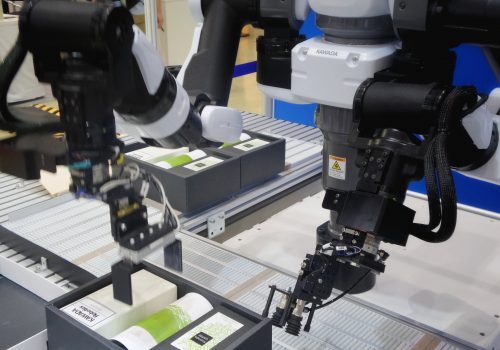The full text of this paper is split across the various articles linked below. Readers can browse in any order. To download a PDF version, use the button below.
Russian President Vladimir Putin was partly right when he famously said of artificial intelligence (AI), “Whoever becomes the leader in this sphere will become the ruler of the world.” It is not simply a race in the sense that first across the finish line wins, others lose, and game over. It is an ongoing, evolving process. But, there is an important “first mover” advantage to those who are leading in the development of AI, particularly “deep learning,” which goes beyond pattern recognition to using neural networks based on how the brain works, with multiple layers of algorithms, each using the output of the previous layer.
Putin’s remark captured the magnitude of the challenges and opportunities ahead. This tech revolution will be a key driver of economic growth, national comprehensive strength, and, thus, geopolitical status in the decades ahead. How well nations are able to innovate, and/or adapt and absorb emerging technologies into their economies will play a large role in determining their economic fate and geostrategic standing. As was the case with the steam engine in the first Industrial Revolution, these emerging technologies can change the global balance of power. Ironically, the very techno-nationalism driven by great-power competition will hamper innovation writ large, which thrives on openness, transparency, and global scientific collaboration.
“As was the case with the steam engine in the first Industrial Revolution, these emerging technologies can change the global balance of power.”
In this emerging economic universe, data are increasingly a key source of economic value. US technology-policy expert Alec Ross describes data as the “raw material” of the new Industrial Revolution. Each day, 5.5 billion or more searches are made using Google, two trillion a year. Ninety percent of the world’s digital data have been created since 2016, and that amount is projected to increase by about 50 percent per year. The cloud has given enormous computing power to the 4.57 billion people across the globe with Internet access.
Neither the pace nor the scope of deployed new technologies will be evenly distributed or predictably linear in deployment, but rather, will occur in bursts as new tech is commercialized, and clustered geographically. For example, 74 percent of some three million industrial robots sold are concentrated in just five countries: Japan, China, the United States, Germany, and South Korea. There are similar patterns in both global and national (e.g., in the United States, Silicon Valley, New York, and Boston; in China, Beijing, Shenzhen, and Shanghai) concentrations of venture capital and in the geography of published scientific papers. That advantage might accelerate as a result of the concentration of scientists, engineers, and technologists in those tech-centric locales. This has been the pattern regarding the geography of innovation in the United States, and it is occurring globally as well.
This portends a tech-driven hierarchy among nations, as well as increased inequality within nations as low-skilled—and increasingly, white-collar—jobs are automated, displaced by AI-powered robots and applications: redundant physical labor; car, truck, bus, and taxi drivers; legal research, etc. Those nations at the upper tier—led by the United States and China—are well positioned across the spectrum of emerging technologies for the economic and geostrategic advantages that will likely accrue to those at the leading edge of innovation.
This is reflected in the global dominance in AI of the seven top US and Chinese firms: Amazon, Google, Facebook, Microsoft, Alibaba, Baidu, and Tencent.
A number of smaller nations—Israel, Singapore, and Sweden among them—punch well above their weight in terms of tech innovation capacity. All of these nations have been leaders in tech innovation. Much autonomous vehicle software is Israeli in origin; for Sweden, Skype, Spotify, and Ericsson are rare European global tech icons. These countries are all investing heavily in AI and related technologies. In this new knowledge economy, with data an essential raw material, having the relevant type of data and an ample pool of technical skills—not physical size—will be primary drivers of the geoeconomics, or geotechnology, of the future.
The new platforms have transformed business models from owning to using; that is, the “sharing” business culture. For example, Uber, the world’s largest transportation firm, owns no autos; Amazon, the world’s largest store, has few brick- and-mortar stores. The smallest startup has access to global markets. Mobile phones have become ubiquitous, with some five billion worldwide, allowing developing nations to leapfrog generations of technology. Chinese mobile payments have reached some $41.5 trillion—more than in the rest of the world combined—spearheaded not by banks, but by Alibaba and TenCent fintech (financial-technology) apps. If China is the first cashless society (with India not far behind), tiny Estonia has become the world’s first entirely digitized government.
As technology leaps ahead of national governments and international institutions, this exponential velocity of change creates troubling conundrums. Will robots displace humans, work alongside them, and/or create new jobs? Should fully autonomous weapons—those that make the choice of who to kill and when without human involvement—be banned? The ominous fear of science-fiction movies, a “Terminator scenario” in which super-smart machines dominate humans, is high on the list of fears raised by leading scientists and technologists such as Elon Musk and the late Stephen Hawking. Machines with general intelligence near or surpassing that of humans do not yet exist, nor are they likely to in the foreseeable future. But, the warnings from such prominent voices suggest that this may be possible, if many decades away.
In the national security realm, emerging technologies using AI (including targeting, surveillance, and swarming drones, as well as hypersonic vehicles and possible wholly autonomous weapons systems) are transforming the future of warfare in ways that strategic planners are struggling to comprehend. At the same time, these technologies—especially autonomous weapons—raise difficult moral and ethical questions.
Biotech

Bioscience is another important, and disruptive, component of the tech revolution. Some go so far as to call the current era the “Biological Century.” Since the 1970s, breakthroughs on recombinant DNA and the ability to manipulate life at the molecular level are revolutionizing healthcare. The melding of biotech with information technology (IT), and now AI and synthetic biology, creates this new world—think of genetic code as software. It shocked the world in November 2018 when He Jankui, a Chinese researcher, announced he had used CRISPR, a gene-editing technique, to alter the genomes of twin baby girls to make them resistant to human- immunodeficiency-virus (HIV) infection, a trait that would then become hereditary.35 The claim—yet to be reported in a scientific paper—initiated a firestorm of criticism, with some scientists and bioethicists calling the work “premature,” “ethically problematic,” and even “monstrous.”36 Some troubling continuing Chinese genetic experiments suggest how fragile and tentative the ethical consensus is. Scientists at China’s Kunming Institute are creating transgenic macaque monkeys with copies of a human gene believed to shape intelligence, and other such experiments, to the outrage of many Western scientists.37
Biotech has already begun to show its potential to contribute to immunotherapy for horrible illnesses—such as amyotrophic lateral sclerosis (ALS) and rare blood diseases—make designer cells, create new pathogens of high lethality, or enhance the physical and intellectual capabilities of humans. Where should the line be drawn? Are there unanticipated consequences of editing genes? Such troubling questions recently incited a group of dozens of leading scientists (including two of CRISPR’s founders) and researchers to call for a moratorium on gene editing, as well as the creation of an international governance body to devise a set of rules and standards to guide any future alteration of the human genome.
The explosion of biotechnology across the spectrum of possibilities is, of course, enabled by the exponential advances in computing power, AI, and big data. Biotech is, in some respects, more mature than AI and other emerging technologies. From the sequencing of the human genome and its consequences, to biotech creation of genetically modified organisms (GMO) agriculture, synthetic biology, (combining engineering and biology to manipulate cells and submolecular life) to produce products for agriculture, pharmaceutical goods, new materials, and other goods, many applications are widely commercialized. This IT/AI/biotech fusion also lowers the cost of entry for the dark side of threatening activities, from bioengineered organisms to manufactured illegal drugs to biowarfare agents. In the United States, bioscience firms employ 1.74 million people, and had an overall impact on the US economy of some $2 trillion in 2016.
The remarkable social and economic benefits yielded from biotechnology, while still evolving, are already apparent. GMOs that are drought resistant, need no pesticides, and produce more bountiful crops appear an important response to climate change while providing food for a growing population. New drugs can treat rare diseases, improve the chances of curing cancer, advance immunotherapy and regenerative medicine, and the list goes on. Yet, as the potential to alter gene pools and alter or create life raises profound ethical and philosophical questions and concerns. A growing anti-science mindset, which seems to accompany populism and distrust of elites, has raised opposition to GMOs and immunization in the United States and Europe.
Energy and the tech revolution

One underanalyzed area with regard to the tech revolution is the role it is beginning to have in transforming the future of energy. At a time when growing concern about climate change is accelerating efforts to reduce greenhouse-gas (GHG) emissions, of which fossil fuels are a major source, technology may have the following impacts.
• Electrification of transport: Projections vary, but China, the largest e-car manufacturer, plans to make one in five cars electric by 2025. A BP scenario forecast suggests 30 percent of passenger vehicles will be e-cars by 2040, by which time oil demand will peak and begin a downward trajectory. Tesla’s success has injected a new dynamism into e-car development and consumer acceptance. Such change would alter urban mobility, reducing carbon-dioxide (CO2) emissions and local air pollution.
• Battery/energy storage: Breakthroughs in cheaper and more efficient batteries will have profound impacts on, and prospects for, scaling up wind and solar energy and, hence, the transition to a post-petroleum economy. The US Department of Energy has set a goal of batteries that can store energy at less than $100 per kilowatt hour, less than half of current costs. While both government and private- sector R&D are intense in the quest for this silver bullet, such a breakthrough is unlikely before 2025–2030.
• 5G and IoT: These technologies will shape smart grids, smart factories, and smart buildings, and enable smart cities (buildings consume 30 percent of all electricity).
• Advanced manufacturing (3D printing): This should help lower costs and allow for the localization of production for renewable energy sources, including solar cells, wind turbines, and their supporting equipment.
• Modular nuclear: Small-scale modular nuclear power, which is cheaper and more easily deployable, may be commercially viable before 2030.
Beyond such specific impacts on oil demand and CO2 emissions, the realization of transformed energy systems may have far-reaching geoeconomic and geopolitical consequences. Battery storage and renewable breakthroughs, combined with 3D printing, should enable distributed-energy generation and localized production for developing nations, allowing them to leapfrog grids and pursue more decentralized development. The geopolitical shifts resulting from peak oil demand and the electrification of transport carry great risk for major oil producers, with the potential for dramatic instability in petrostates including Russia and parts of Africa, the Middle East, and Latin America. Conversely, those states that innovate and/or deploy new energy technologies (and related “green” technologies), will be best positioned economically. The planning and investment in post-petroleum energy sources and infrastructure by the United States, European Union (EU) nations, Saudi Arabia, and the Gulf states are an example of such efforts at foresight.
Read the full paper
Image: A close up of the production facility at the Bristol Robotics Laboratory. Louis Reed, Unsplash



